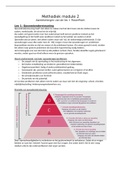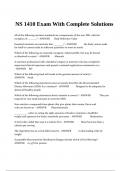Portfolio, Programme and Project Offices or P3O by Axelos
Chapter 1: Introduction
PPM is used as the abbreviation for Portfolio, Programme and Project Management, which also
includes value and risk management.
PPM Maturity refers to an organization’s capability to deliver portfolio, projects and
programmes. (P. 3)
Definition, Portfolio: “The totality of an organization’s investment (or segment) in the changes
required to achieve its strategic objectives.” (p. 5)
Definition, portfolio management: “A coordinated collection of strategic processes and
decisions that together enable the most effective balance of organizational change and business
as usual.” (p. 5)
Definition, Business As Usual (BAU): “the way the business normally achieves its objectives.” (P.
5)
Definition, programme: “A temporary, flexible organization structure created to coordinate,
direct and oversee the implementation of a set of related projects and activities in order to
deliver outcomes and benefits related to the organization’s strategic objectives. A programme is
likely to have a life that spans several years.“ (P. 5)
Definition, programme management: “the coordinated organization, direction and
implementation of a dossier of projects and transformation activities (i.e. the programme) to
achieve outcomes and realize benefits of strategic importance.“ (P.6)
Definition, project: “a temporary organization that is created for the purpose of delivering one
or more business products according to an agreed business case.” (P. 6)
Definition project management: “the planning, delegating, monitoring and control of all aspects
of the project, and the motivation of those involved, to achieve the project objectives within the
expected performance targets for time, cost, quality, scope, benefits and risks.” (P. 6)
, Strategic objectives:
Managed benefits
Change the business Run the business
(Portfolio management) (business as usual)
Managed programmes and projects
Figure 1.1. Run the business vs change the business (P. 6)
The two key stakeholder groups within any organization are senior management and the
operational delivery teams. The operational delivery teams run the changed organization
through and after the transition.
Definition, portfolio, programme and project offices (P3O): “the decision- enabling and support
business model for all business change within an organization.” (P. 7)
Centre of
Organisation portofolio
excellence
office (permanent)
(permanent)
Standards,
Skills/training
Hub portfolio office Hub portfolio office Assurance
(permanent) (permanent) Knowledge
management
Programme office for Project office for a
a specific initiative specific initiative
(temporary) (temporary)
Figure 1.2. example of a P3O model. (P. 8)
P3O model elements:
, - Organization portfolio office: is a permanent office set up to support the definition and
delivery of a portfolio of change across the entire organization/ enterprise.
- Hub portfolio office: is a permanent office set up to support the definition and delivery
of a portfolio of programmes and projects within a department/ division/ geographical
region/ business unit.
- Programme office: a temporary office set up to support the delivery of a specific change
initiative being delivered as a programme.
- Project office: a temporary office set up to support the delivery of a specific change
initiative being delivered as a project.
- Centre of Excellence (CoE): a portfolio, programme and project management standards
office which defines standards (consisting of processes, templates and tools), skills and
training, manages knowledge and may provide independent assurance. The CoE may be
part of the portfolio office or be an independent office. (P.9)
To deploy the P3O model in any organization the organization is dependent on many factors:
- The aims and goals of both the p3O sponsor and the organization;
- The business needs;
- The PPM maturity;
- The capabilities and capacity of the resource pool;
- The number of programmes and projects being undertaken;
- The wider organizational, political and cultural environment;
- The business divisional/departmental structure and the geographical location of staff
- The effectiveness of matrix management structures. (P. 8 & 9)
Chapter 1: Introduction
PPM is used as the abbreviation for Portfolio, Programme and Project Management, which also
includes value and risk management.
PPM Maturity refers to an organization’s capability to deliver portfolio, projects and
programmes. (P. 3)
Definition, Portfolio: “The totality of an organization’s investment (or segment) in the changes
required to achieve its strategic objectives.” (p. 5)
Definition, portfolio management: “A coordinated collection of strategic processes and
decisions that together enable the most effective balance of organizational change and business
as usual.” (p. 5)
Definition, Business As Usual (BAU): “the way the business normally achieves its objectives.” (P.
5)
Definition, programme: “A temporary, flexible organization structure created to coordinate,
direct and oversee the implementation of a set of related projects and activities in order to
deliver outcomes and benefits related to the organization’s strategic objectives. A programme is
likely to have a life that spans several years.“ (P. 5)
Definition, programme management: “the coordinated organization, direction and
implementation of a dossier of projects and transformation activities (i.e. the programme) to
achieve outcomes and realize benefits of strategic importance.“ (P.6)
Definition, project: “a temporary organization that is created for the purpose of delivering one
or more business products according to an agreed business case.” (P. 6)
Definition project management: “the planning, delegating, monitoring and control of all aspects
of the project, and the motivation of those involved, to achieve the project objectives within the
expected performance targets for time, cost, quality, scope, benefits and risks.” (P. 6)
, Strategic objectives:
Managed benefits
Change the business Run the business
(Portfolio management) (business as usual)
Managed programmes and projects
Figure 1.1. Run the business vs change the business (P. 6)
The two key stakeholder groups within any organization are senior management and the
operational delivery teams. The operational delivery teams run the changed organization
through and after the transition.
Definition, portfolio, programme and project offices (P3O): “the decision- enabling and support
business model for all business change within an organization.” (P. 7)
Centre of
Organisation portofolio
excellence
office (permanent)
(permanent)
Standards,
Skills/training
Hub portfolio office Hub portfolio office Assurance
(permanent) (permanent) Knowledge
management
Programme office for Project office for a
a specific initiative specific initiative
(temporary) (temporary)
Figure 1.2. example of a P3O model. (P. 8)
P3O model elements:
, - Organization portfolio office: is a permanent office set up to support the definition and
delivery of a portfolio of change across the entire organization/ enterprise.
- Hub portfolio office: is a permanent office set up to support the definition and delivery
of a portfolio of programmes and projects within a department/ division/ geographical
region/ business unit.
- Programme office: a temporary office set up to support the delivery of a specific change
initiative being delivered as a programme.
- Project office: a temporary office set up to support the delivery of a specific change
initiative being delivered as a project.
- Centre of Excellence (CoE): a portfolio, programme and project management standards
office which defines standards (consisting of processes, templates and tools), skills and
training, manages knowledge and may provide independent assurance. The CoE may be
part of the portfolio office or be an independent office. (P.9)
To deploy the P3O model in any organization the organization is dependent on many factors:
- The aims and goals of both the p3O sponsor and the organization;
- The business needs;
- The PPM maturity;
- The capabilities and capacity of the resource pool;
- The number of programmes and projects being undertaken;
- The wider organizational, political and cultural environment;
- The business divisional/departmental structure and the geographical location of staff
- The effectiveness of matrix management structures. (P. 8 & 9)











